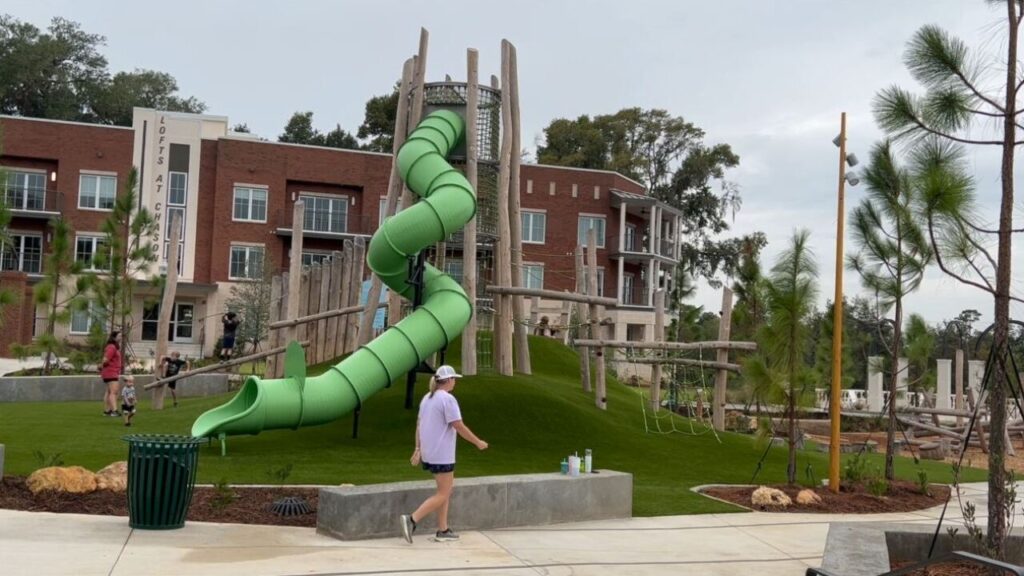Introduction:
The Chason Park Project in Bainbridge, Georgia, USA, is a pioneering initiative led by TSW Design architects and Salas-O’Brien engineers, showcasing innovation and sustainability in water management. This project aimed to revitalize a beloved community park and included implementing an efficient gray water treatment and reuse system. In this article, we delve into the objectives, strategies, outcomes, and the seamless automation that defined this groundbreaking project.
Objective:
The primary objective of the Chason Park Project was twofold: to enhance the quality of community life by revitalizing the park and to teach the visitors about the natural resources in the community. A key component of the park is the splash pad, which helps tell the story of the adjacent Flint River. Implementing a water management system that treated and reused splash pad runoff water was also deemed critical to both the education and sustainability goals. This treated water was repurposed for irrigation and toilet flushing, aligning with Bainbridge’s commitment to sustainable practices.
Strategies and Implementation:
Community Involvement and Input:
TSW engaged the community and leadership through extensive consultations to ensure the project aligned with the community’s needs and preferences, emphasizing the importance of sustainable water use.
Gray Water Treatment and Automation:
The heart of the project was the implementation of an Intewa Aqualoop system, certified to the NSF350 standard, for treating splash pad runoff water. The system operates in full automatic mode, eliminating monthly maintenance, as required for compliance with the NSF350 standard.
Multi-Use Application:
Treated gray water was repurposed for irrigation, significantly reducing the park’s reliance on fresh water and promoting efficient resource utilization. Additionally, it was used to flush toilets, showcasing a holistic approach to water conservation and reuse.
Outcomes:
Water Conservation and Efficiency:
The gray water treatment system significantly reduced the park’s water consumption by repurposing treated water for landscaping and toilet flushing, contributing to water conservation efforts and reducing any potential strain on local water resources.
Operational Efficiency and Cost Savings:
The automated system’s seamless operation reduced maintenance requirements, ensuring longevity and cost-effectiveness. This, in turn, resulted in cost savings for the park and protected the owners’ investment.
Community Pride and Environmental Responsibility:
The successful Chason Park Project elevated the community’s pride by showcasing their commitment to sustainability and responsible environmental stewardship. The initiative positioned Chason Park as a showcase of sustainable water management practices.
Conclusion:
The work by Georgia Water Tanks at Chason Park stands as a beacon of innovation and sustainability, highlighting the successful integration of automated gray water treatment for community benefit. By embracing community input, leveraging innovative technologies, and achieving seamless automation, the project has set a remarkable precedent for future sustainable water management initiatives. This endeavor underscores the pivotal role of collaboration and innovation in promoting responsible water use and creating greener, more environmentally conscious communities.

